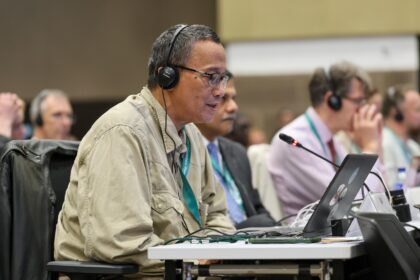[ad_1]
Soaring demand for chips and other key semiconductor products is fuelling expansion around the world, but none so much as the chip makers in Dresden, home to a growing cluster of IT and microelectronics manufacturers.
According to TheStar.com, US chipmaker GlobalFoundries plans to invest €400 million to expand its clean rooms. The company produces 400,000 wafers a year and plans to double this, according to chief executive Manfred Horstmann.
He did not provide a time frame for these plans, but said the company was benefiting from a worldwide shortage of chips.
Automakers around the world have been forced to curtail production, due to a lack of the critical chips required to operate advanced systems in today’s vehicles.
Horstmann attributed the rise in demand to the pandemic, which has shown the need for digitization and driven technological innovation, the report said.
“What normally takes 10 years has now all taken place within one year,†he said.
Huge factories belonging to Globalfoundries and former Siemens subsidiary Infineon churn out chips that can end up in cars, consumer products like
smartphones or more specialized applications like passports or power conversion devices, EETimes reported.
In sterile rooms, dozens of machines lay down layer upon layer of circuitry in hundreds of light and chemical processes, watched over remotely by engineers.
The technicians who keep the units turning 24 hours a day must hide skin and hair under spotless white coveralls as they pass through airlock-like entrances into the clean areas.
Such workers are “a fiercely fought-over resource here in Saxony, a resource that’s extremely important to us,†Globalfoundries factory chief Thomas Morgenstern said.
Over the past decade, the region has added 450 high-tech companies and 35,000 tech industry workers, according to business association Silicon Saxony.
Markus Lötzsch, CEO of Saxony Economic Development Corp., described Dresden as city reborn–“a cradle of old industrialization forces†that in its new incarnation has attracted an international field of tech players.
Only 10 years ago, however, reinventing Dresden as a global electronics center seemed as daunting a task as restoring the city’s landmark Frauenkirche (Church of Our Lady), which had been blasted by Allied bombs in 1945.
The escalating costs of that restoration project, which required salvaging and numbering the surviving bricks before the pains- taking reassembly could begin, taxed Dresden’s leaders to the limits of their resources.
Yet just as the city was steadfast in its desire to restore the church to its prewar glory, Dresden was determined, in the wake of Germany’s reunification, to regain the technological primacy it enjoyed during the Cold War.
When US computer processor maker AMD was building a factory in the eastern German city Dresden in the late 1990s, it sent around 200 local engineers for training to its site in Texas, TheLocal.de reported. But today the city is an engineering hub in itself.
“Not even two days in, they could almost explain the innards of a chip better than the engineers there,†recalls Karin Raths, a 20-year veteran at the plant — now owned by US-based chipmaker Globalfoundries.
“They were in unbelievably good shape thanks to those years in the German Democratic Republic (GDR), the scarcity economy, the famous reverse engineering†of Western technology under the pre-1989 regime, she adds.
Infineon, also based in Dresden, plans to expand its production capacities over the next five years, investing €1.1 billion.
Investment at the state and federal levels has also been critical to Dresden’s revival.
Industry players say Infineon reportedly considered pulling out of the city when the downturn hit the company hard, but changed its mind when it realized the incentive package it received from the state was too good to abandon.
Meanwhile slightly north of Dresden, Bosch plans to open a new semiconductor factory in June.
The company has invested around €1 billion in the site, its largest single investment in its 130-year history.
Much of AMD’s recent success against Intel Corp. in server microprocessors is owed to the “superior products†manufactured in Dresden and “superior time-to-market†enabled by AMD Saxony, said Hans-Raimund Deppe, corporate vice president and general manager at AMD Saxony.
“We’ve never missed a milestone in our ramp-up efforts,†he said.
Collaboration among competing chip vendors has also been critical to the success of the region.
In 2002, AMD, Infineon and DuPont jointly established an Advanced Mask Technology Center (AMTC). Japan’s Toppan took DuPont’s place in the partnership after acquiring the US company in 2004.
AMTC is both the R&D and pilot-production site for optical photomasks for advanced lithographic generations, including both dry and immersion 193-nm processes and extreme UV.
Pointing in the direction of AMTC – located just beyond the green fields that surround AMD Dresden’s fabs – one worker remarked, “We have the best mask house in the world available to us next door, just a three-minute bicycle ride away.â€
Sources: TheStar.com, EETimes, TheLocal.de
[ad_2]
Source link













